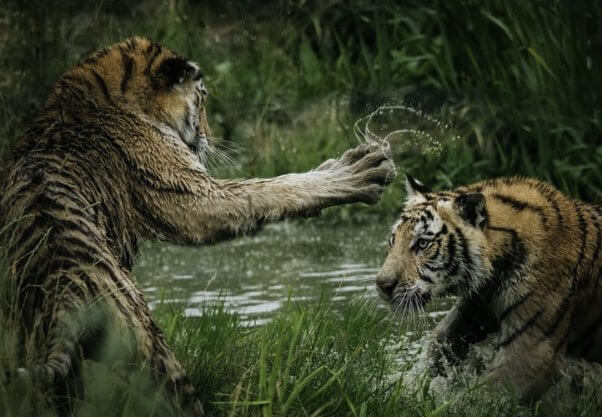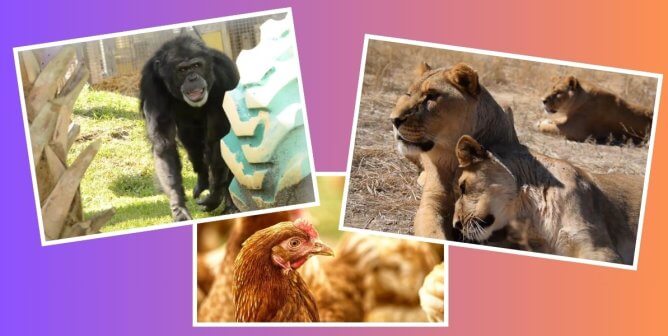These Facts About Tigers Will Have You Ordering ‘Animalkind’ Today
Before you begin your next Netflix binge, tigers have a bone to pick with humans who think they know everything about their striped brothers and sisters. The docuseries Tiger King has focused the public’s attention on big cats living in deplorable conditions at roadside zoos across the U.S. But you may also be wondering about these animals’ natural instincts, abilities, needs, and personalities.
Fortunately, PETA founder and President Ingrid Newkirk and bestselling author Gene Stone have just the book to scratch the itch of curiosity. In Animalkind: Remarkable Discoveries About Animals and Revolutionary New Ways to Show Them Compassion, they present awe-inspiring examples of ways in which animals create deep connections, develop communication networks, and possess various remarkable abilities. For a taste of the book’s thorough study of animals, below are some tiger facts that demonstrate their emotional and intelligent nature.

Tiger Facts That Inspire Compassion
- When tigers mate, they perform a courtship ritual in which a male and a female circle each other while growling or roaring. The two will continue this “circle of love” until they have established trust and will then commit to grooming each other.
- A cat who loves water? Tigers can swim up to 18 miles a day, and they enjoy luxurious baths in ponds, lakes, and rivers. While cubs play by splashing in the water, adults relax in the heat of the day.
- Tigers are happily introverted and prefer to be on their own, except when females are raising their cubs. Tigers have their own territories and choose to visit each other on their way to hunt or when looking for mates. When they do band together, the group is called a “streak” of tigers.
- Tigers’ front legs are shorter than their hind legs, which helps them leap great distances—up to 10 meters forward—to tackle prey or pounce on their playmates.
- Female tigers protect their cubs alone, as single mothers, until their children are around 2 years old. That’s when the cubs can start fending for themselves.
- Tigers communicate with other animals through tasting pheromones. Once their upper lips pick up a scent, they inhale. A pouch-like organ on the roof of their mouth then identifies another being so that they can decide whether they’re friend, foe, or food.
- A tiger’s stripes are like a fingerprint—no two have the same pattern. Their stripes are more than a fur pattern—they even appear on their skin. Tigers’ stripes help them hide in the shadows when they hunt at night.
- A “keystone species,” tigers protect their local ecosystems by hunting prey who would otherwise destroy an area’s vegetation, which is actually a vital part of keeping streams and air clean.

Learn More About Other Animals in Animalkind
Whether you order a digital, physical, or audiobook version of Animalkind, you’ll have the information needed to see animals in a more compassionate light and you’ll learn simple ways to help dismantle speciesism. The book is an empathy compass for even the most seasoned animal rights folks, with nearly a five-star rating on Amazon. Get a copy and discover for yourself this fascinating study, which demonstrates why our fellow sentient beings deserve our respect. A percentage of each purchase also funds PETA’s groundbreaking work to end animal exploitation.
As an Amazon Associate, PETA earns from qualifying purchases. If you buy something after clicking the Amazon links on this page, a percentage of the qualifying purchase will be donated to PETA and help us protect more animals from exploitation.





